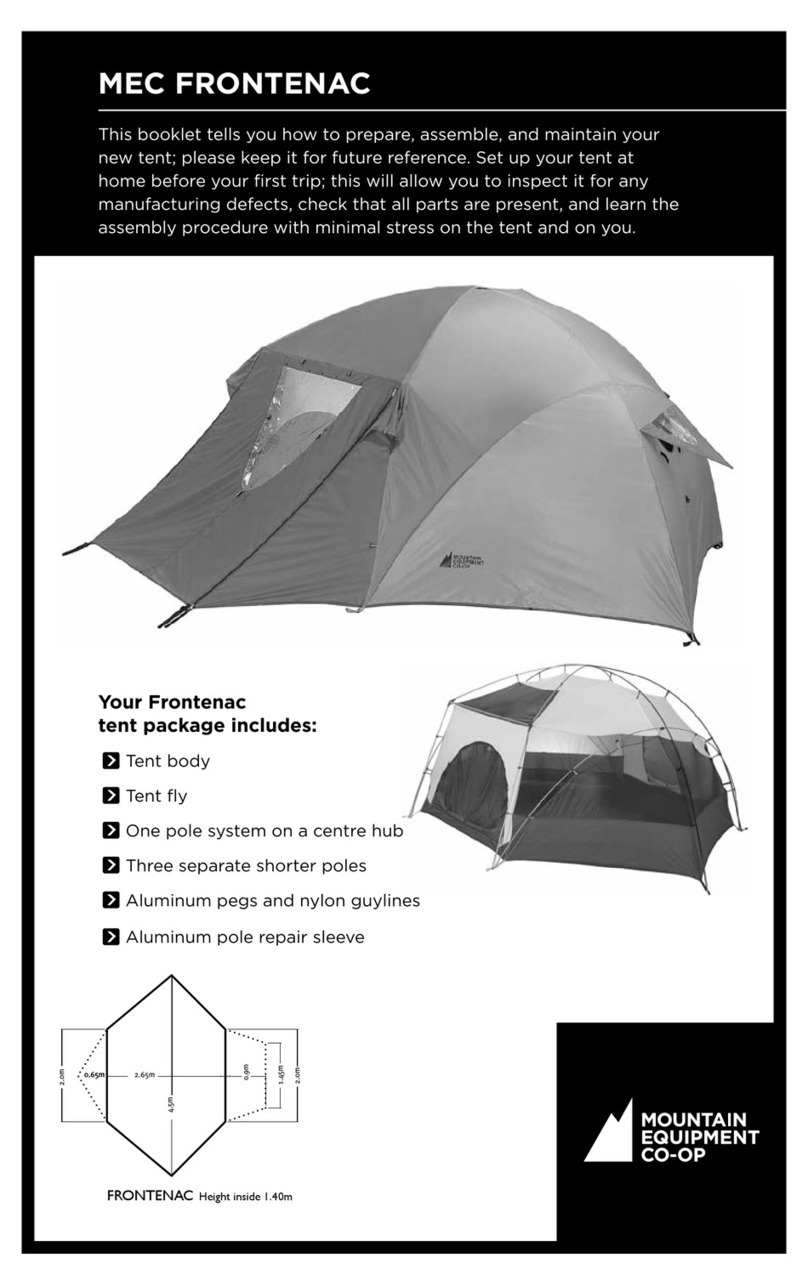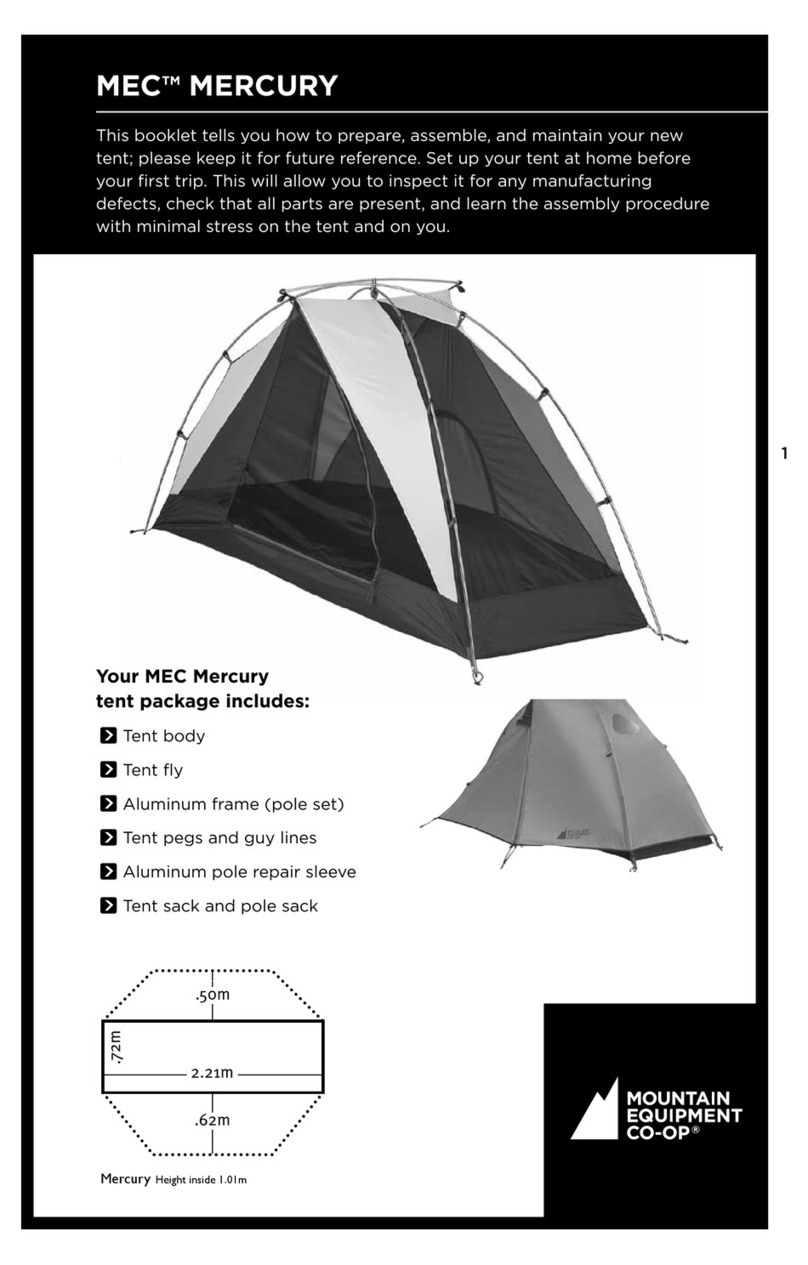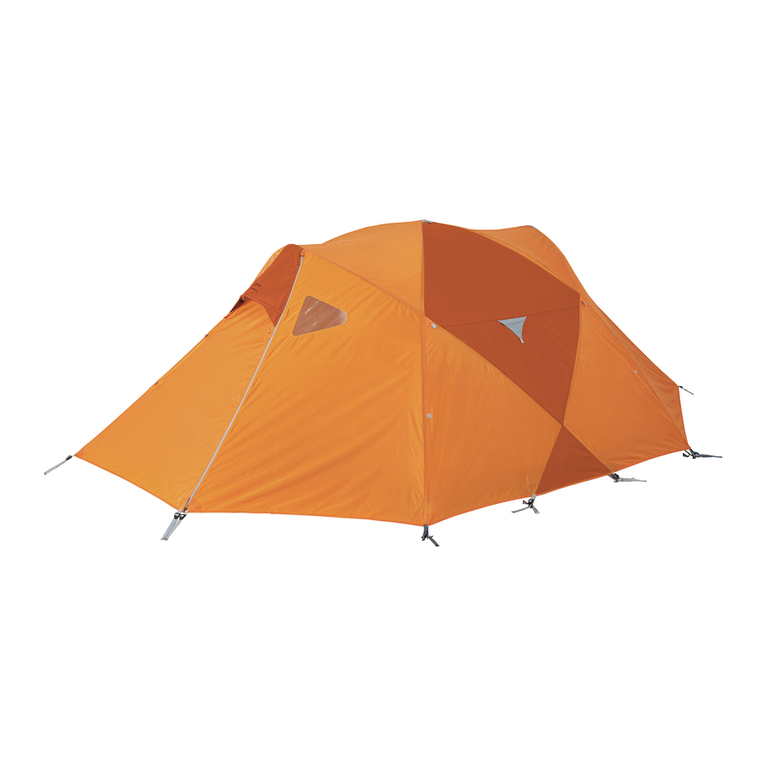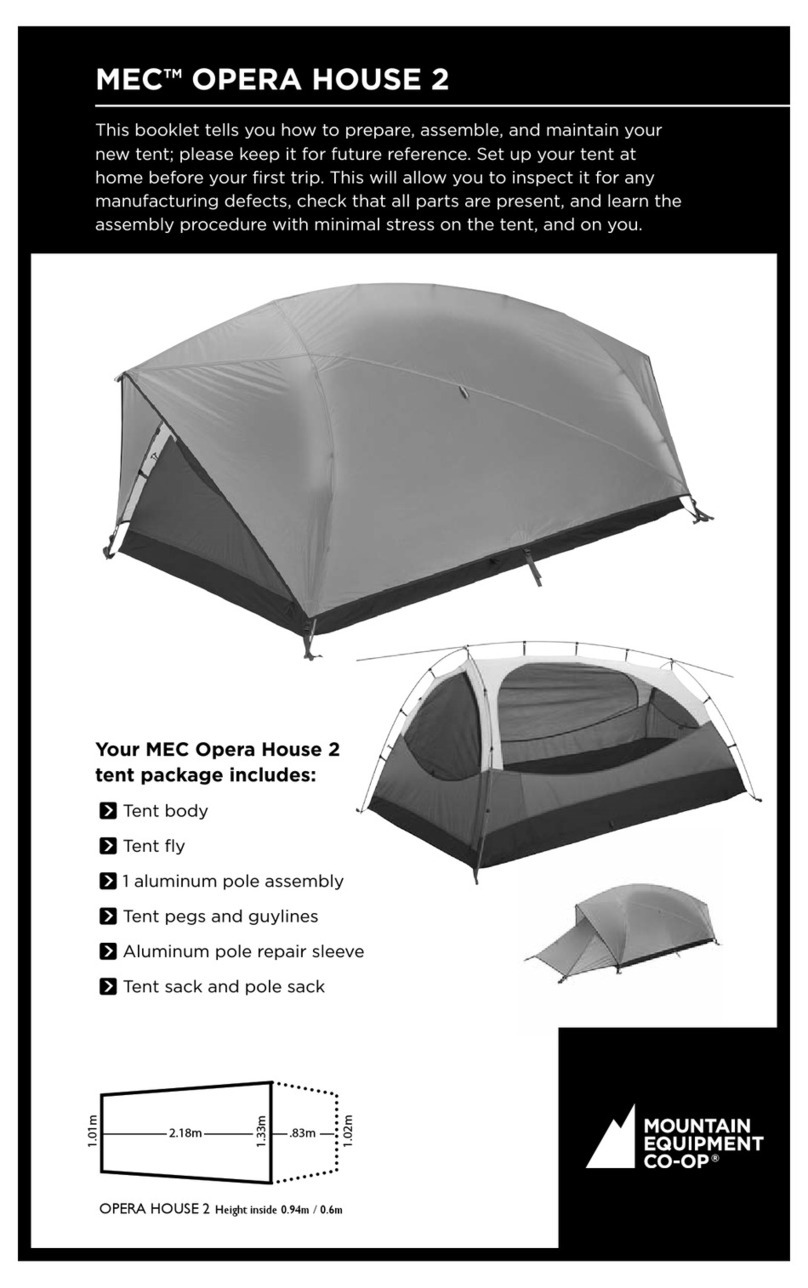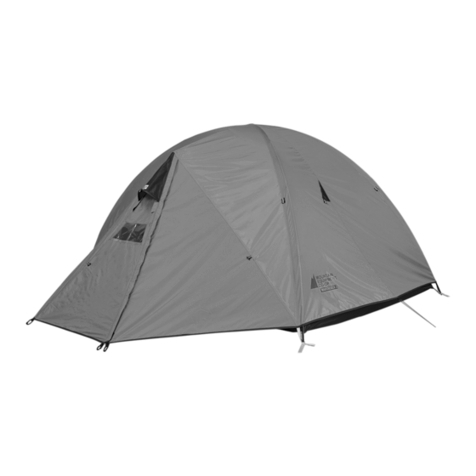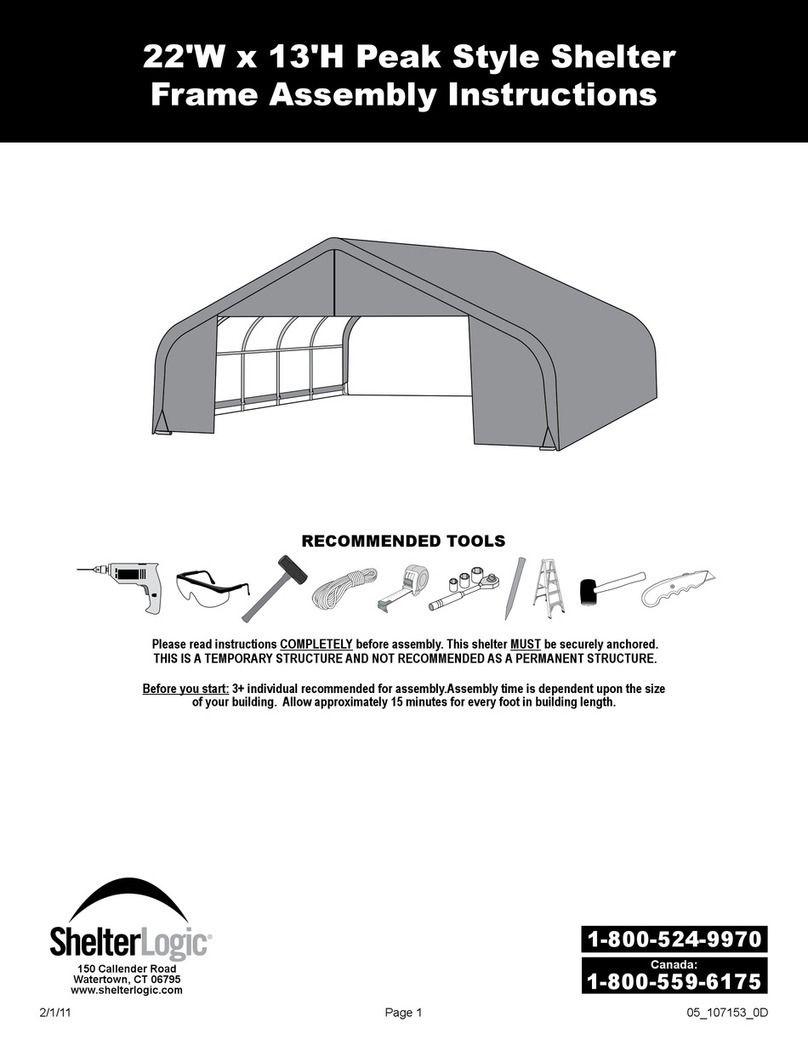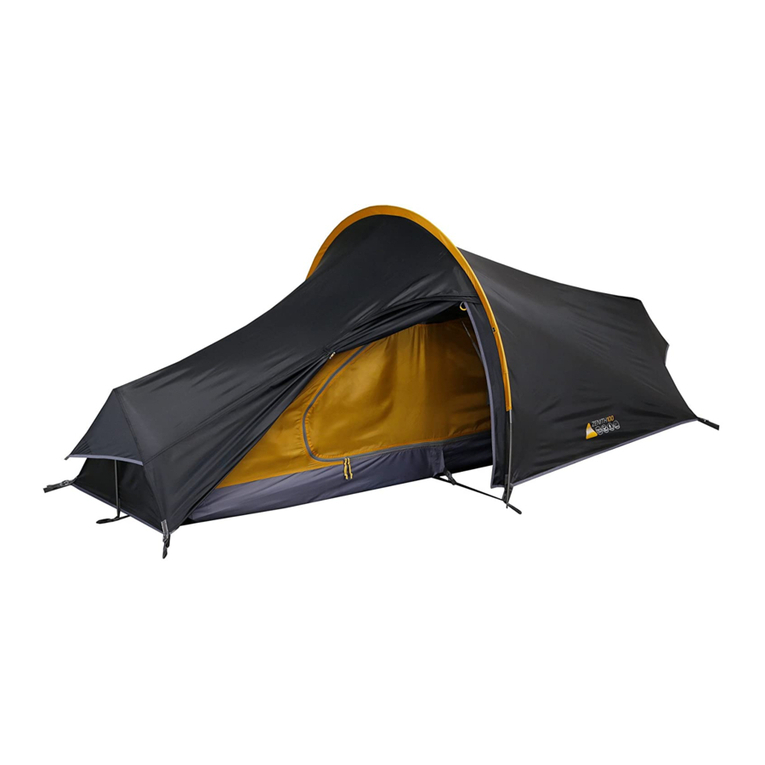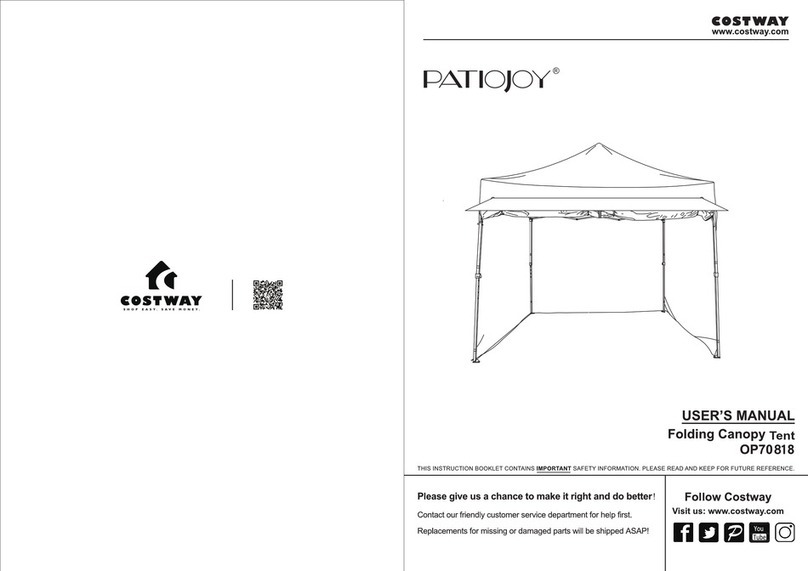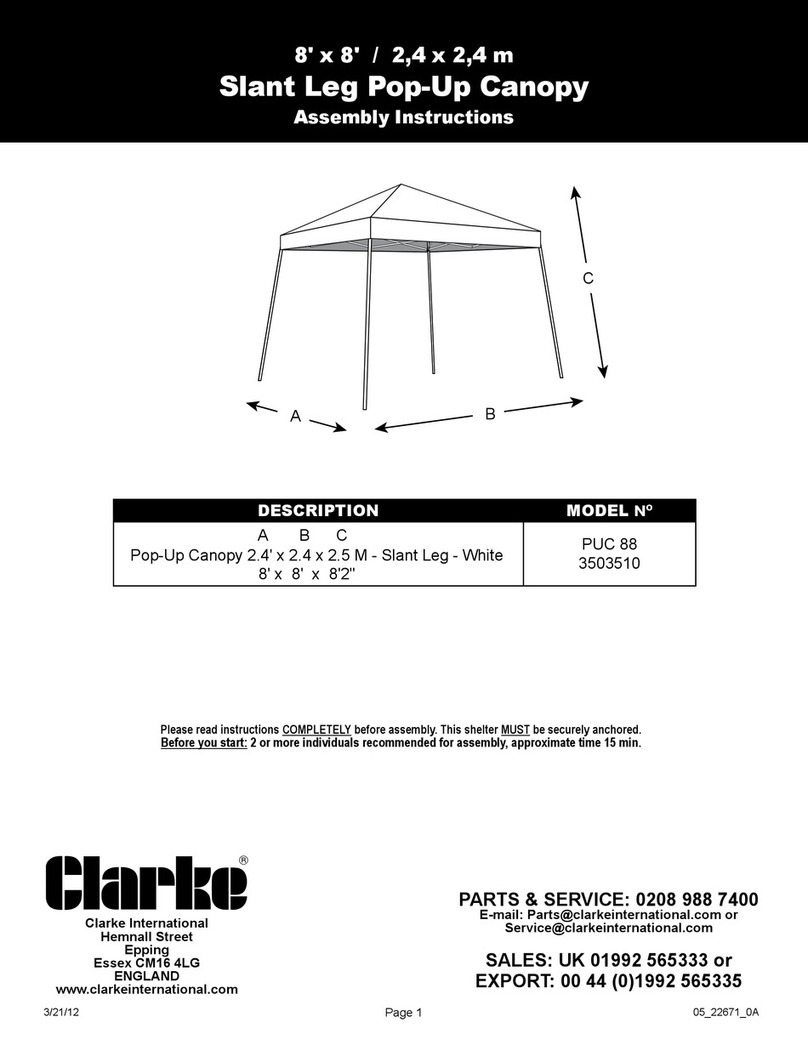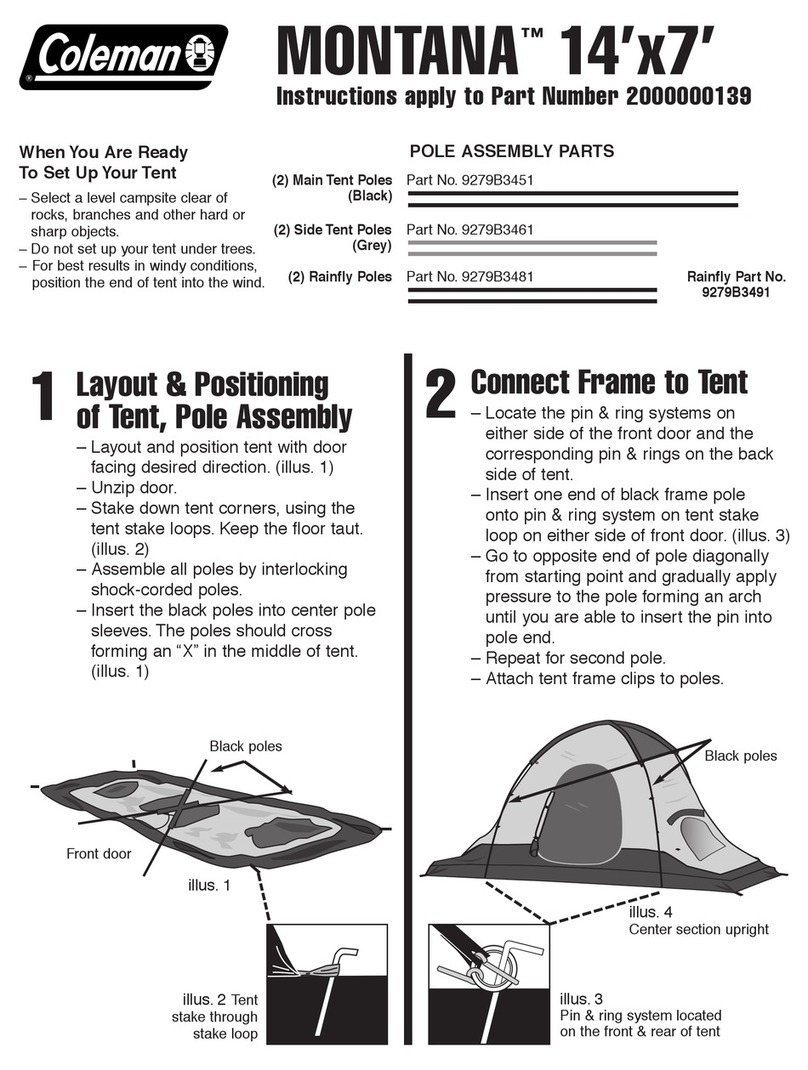
5
of the tent to the bottom of the other side of the tent to enhance the
tent’s stability and support the frame. If the terrain prevents using of all
the external guy points, try combining internal and external guy lines.
Ultralight Set-up
With the Nunatak Footprint (sold separately), you can erect the fly
without the tent body. This makes for a very light, compact, basic shelter,
though it is not made readily bug-proof. Condensation will also be more
evident on the inside of the fly.
Setting up the fly using only the Footprint is best done by two people.
Spread the Footprint out flat on the ground. In windy conditions, you may
wish to peg it out at this point. Next, set up the two poles that cross to
form the apex of the tent roof: while one person holds these two poles
steady at their crosspoint, the other person inserts the two poles into the
appropriate grommets at the Footprint’s two front and two back corners.
Spread the fly on top of the poles (and the person holding them), making
sure the fly doors are properly aligned with the Footprint. The “inside”
person should then attach the appropriate Velcro wrap-tie from the fly
around the poles’ crosspoint. Insert the two remaining poles into their
appropriate Footprint grommets. Attach the appropriate Velcro wrap-
ties to secure these two poles to the first two poles at the four crossing
points. Attach any remaining Velcro fly wraps directly to individual poles.
Attach the grommet strips at the base of the fly to the pole tips, folding
them under as described in “Attaching the Fly”, Step 4. Guy and peg
out the tent as usual. Keep vents and doors open as much as possible
to minimize condensation. You may also pile up or scoop away materials
such as snow, sand, etc. around the base of the fly to vary the amount of
airflow through the tent. Please disturb soil as little as possible to leave
the site untouched for others to enjoy.
Anchoring the Tent
The #7001-T6 aluminum stakes included with the tent are suitable for
general use on relatively soft ground. However, in very hard-packed
ground you will need stronger (and heavier!) stakes that can withstand
the force needed to drive them in. On snow, sand, or other loose-packed
surfaces, wider T-Stakes or aluminum snow stakes will hold better; these
stakes hold best buried horizontally. You can also improvise with other
“stakes” (hiking staffs, ice axes, branches, rocks, trees), using the tent’s
stake loops or cord as required.
When packing for your trip, consider the conditions you’ll likely encounter
and what sort of anchors you’ll require. You can often leave several of
the supplied pegs at home and replace them with improvised anchors,
thereby saving weight and space in your pack.
Nunatak eng.indd 5Nunatak eng.indd 5 3/1/05 2:28:55 PM3/1/05 2:28:55 PM


